I am sure my garden is at the heart of a robin’s territory as my little red-breasted friend seems to spend so much time here.
He is a feisty chap; I have seen him shoo a blackbird four times his size away from the ground feeder!
I wonder if all bird species do this or just a select few?
Table of Contents
Which Birds Are Territorial?
Most bird species are territorial, especially during the breeding season when they have eggs and chicks to protect.
Once the young have fledged, often approaching winter, many species give up their territory to move south to find warmer temperatures.
Members of the tit, finch and corvid families have territorial traits.
The most defensive aggressor of all is the timid little robin; they will defend what is rightfully theirs, to the death.
Blackbirds, wrens, crows, and nuthatches are more aggressive birds. Most species tend to battle birds of their own kind, not these birds. They defend territory against any bird that attempts to steal it, regardless of its size.
Some magpies actively secure territories; others don’t.
Read on to find out why.
Examples of some Birds and their Territories
Here are details of just a few of our territorial garden birds and their typical habits;
Robin
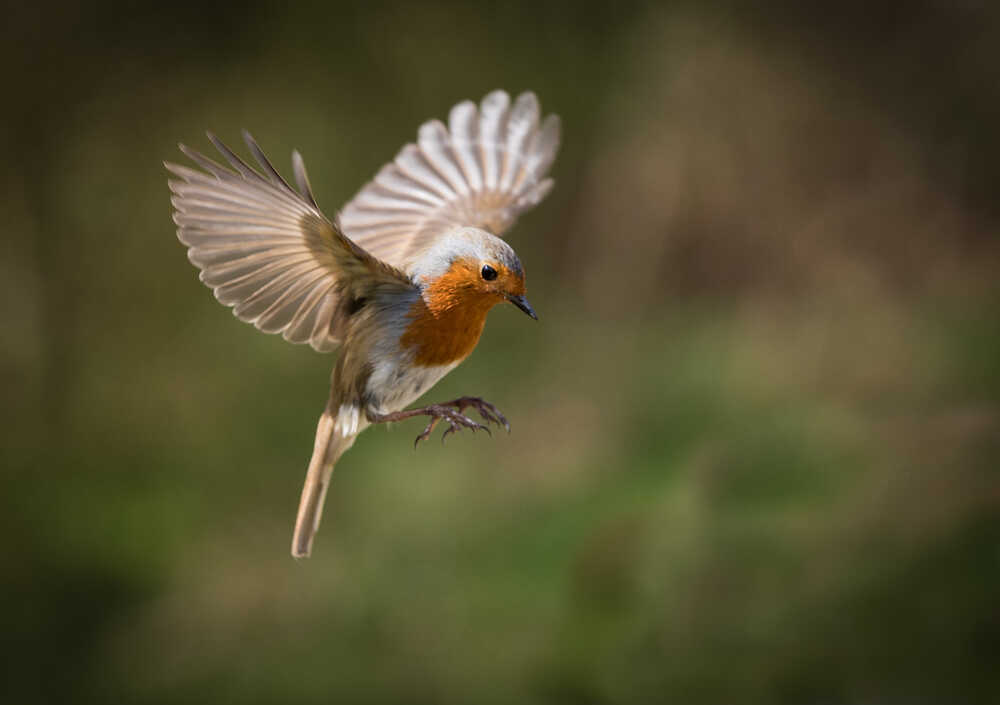
Robins only need a small space to call territory, a backyard or tiny garden is often enough. They only need somewhere secluded to build a nest, a good food source, and fresh drinking winter.
It isn’t unusual for the boundaries of two robins to adjoin in large gardens, and even more in parks.
Male and female robins hold separate territories. In mating season, they join forces, and both birds defend the same territory.
They are feisty birds; although not intimidated by other species, they will fight to the death against robins that attempt to take over their land.
Chaffinch
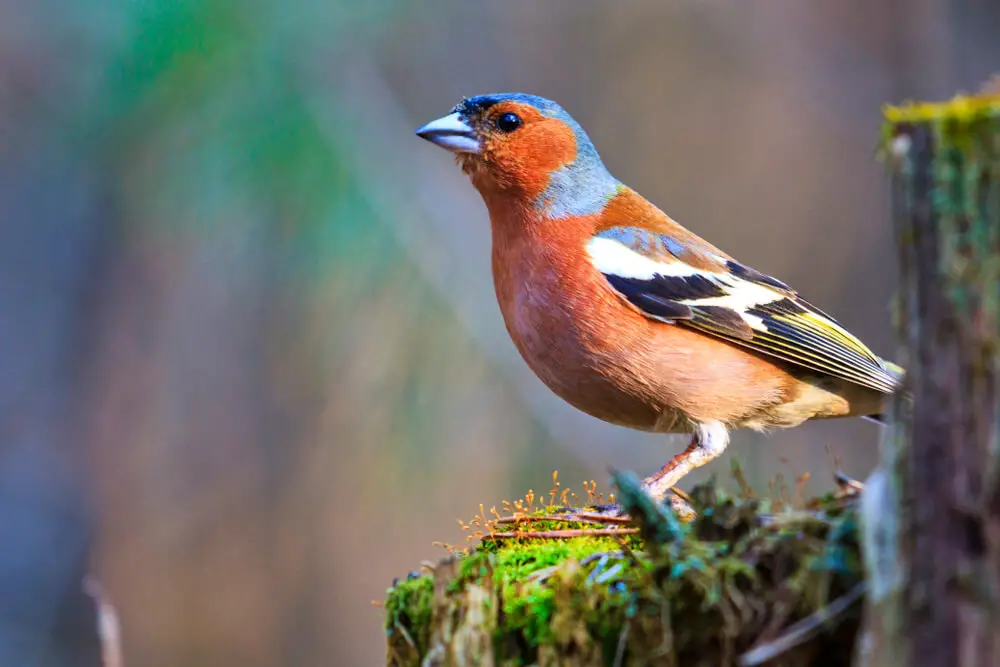
The chaffinch is another bird that is fiercely territorial during the breeding season.
It is timid and very wary and spends most of its time hidden in deciduous trees and shrubs. It has a particular penchant for conifers; expect chaffinches to choose your land as territory if you have several well-established conifers.
When chicks have fledged and winter rolls in, the female bird heads south, searching for warmth.
The male remains, often spending his days flying as part of a large flock, stripping farmer’s fields of fruit and seeds.
In the evening, he returns to the territory to roost, ensuring to keep it safe until the spring when the female returns.
Magpies
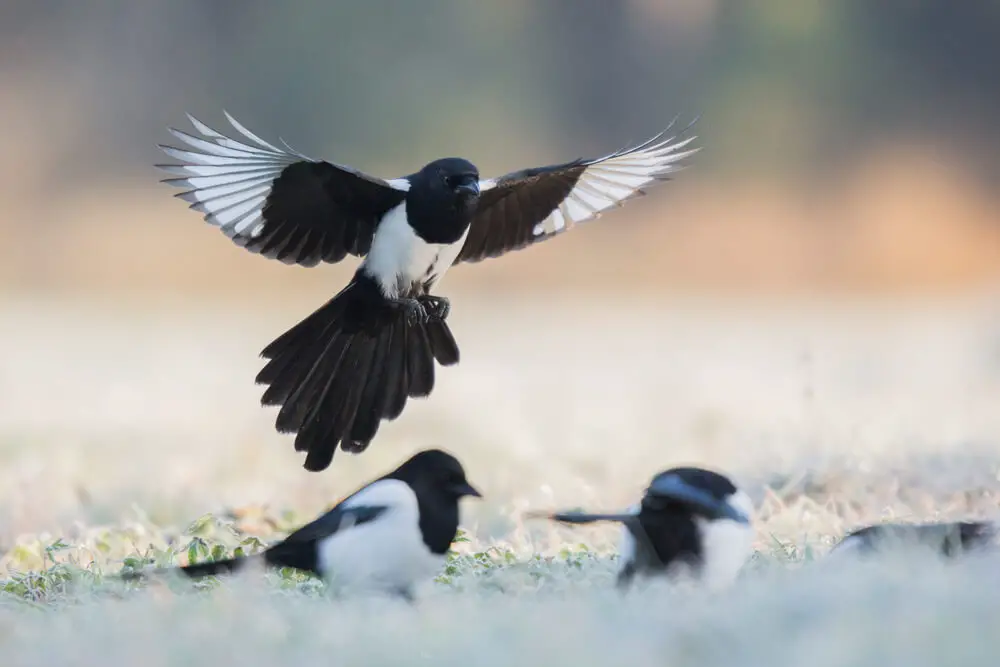
Magpies reach maturity at around 2-years old; around the same time, they hunt for territory and attract a mate.
At any given time, there is 25-60% of the magpie population without a territory. The majority are juveniles and those unlucky in love!
These birds congregate in large flocks in 12-acre+ spaces. The group’s make-up frequently changes as new birds join and leave to form pairs.
Magpies’ territory surrounds its nest, often found in a thorny shrub or atop a tall tree.
The loud squawk of the bird usually frightens other birds off but, there is always at least one other magpie hanging around, trying to take over dominance.
Magpies fight to the death should they need to, not just other magpies but birds from all species.
Wrens
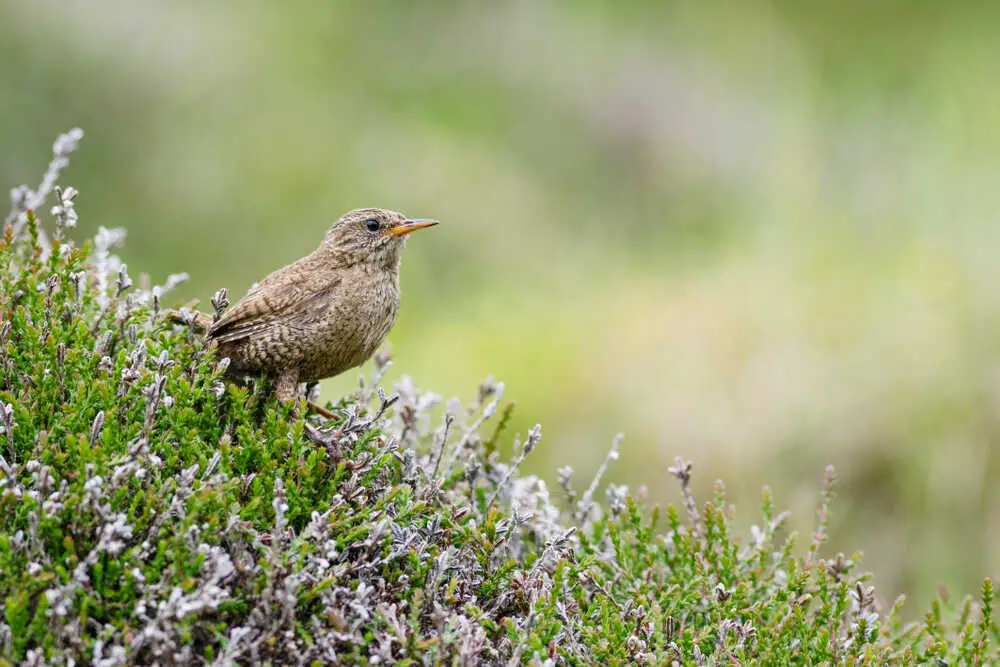
Wrens are strongly territorial, at least during the breeding season. The male is a rambunctious character that works hard to construct several nests within its territory, hoping at least one will win the approval of his ideal female!
Their territory isn’t big, around an acre, but they aren’t the best neighbours. Wrens are ‘interspecifically antisocial’ now there’s a mouthful.
They don’t just fight among themselves; wrens hate invaders of any bird species.
This is strange behaviour when you consider on harsh winter nights multiple wrens huddle together in cavities and nesting boxes. As many as 30-birds share a space, hoping that the increased body heat helps them survive.
Nuthatches
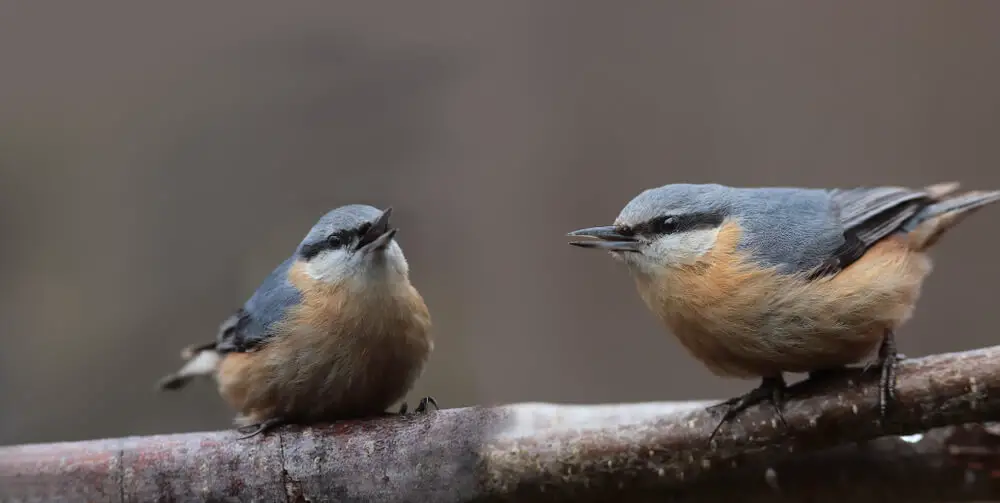
Nuthatches are another fiercely territorial garden bird, sometimes year-round.
Their territory is relatively large, sometimes covering 5-8 acres.
Woe betides any other birds using a bird feeder within that space! Nuthatches charge at them with the ferocity of a bull, knocking them to the ground, no matter how big they are.
They nest wherever there are lots of mature trees. Nuthatches love large oak trees; they are often central to their territory.
Crows
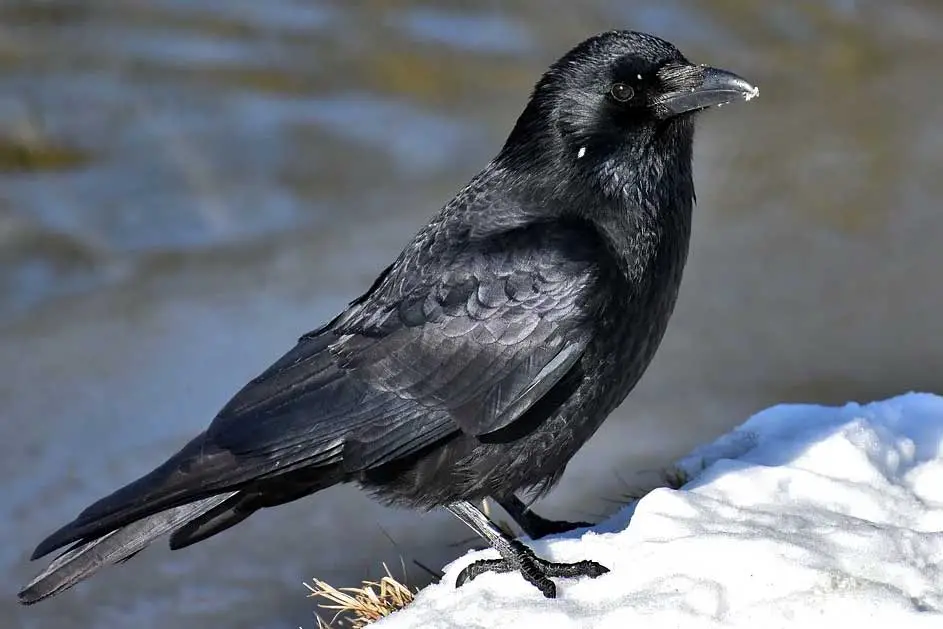
Crows don’t reach sexual maturity until 2-4 years; they have no call for territory until then.
When they form a pair, the partnership and the territory typically last for several years, sometimes a lifetime.
Crows mate for life, but the male is promiscuous and can have up to 10 more partners in that time.
Crow’s territory replicates the place where they were born and raised, whether rural, urban, or suburban.
They may choose the spot right next door but rarely move more than 60km away.
Crows, like nuthatches and kingfishers, practice cooperative breeding.
This means there might be 10 other birds helping raise a brood at one time. The helpers are usually male relatives of the father.
Why this happens is a bit of an enigma. But, with such promiscuity within the crow family, the helpers may be actually assisting in raising their own offspring!
Peregrine Falcon
The largest member of the falcon family is a solitary bird that only spends a few weeks breeding before returning to its preferred life of solitude.
Many birds of prey have territories covering tens of square miles, but the falcon isn’t typical.
They build their nests – called eyries – on earthy cliff faces or quarries; they might only be a km from the next closest bird.
However, their hunting territory is a huge expanse of around 24-26 miles.
They construct their nests in areas of abundant, reliable food sources as they possibly have to share the space with other birds.
What is the Purpose of a Territory?
You might think that birds find the first available spot and pitch up home. There is an element of that, but more thought goes into it.
Its chosen space needs to be somewhere to nest secure from predation. It must contain a reliable and predictable food and drink source.
Nesting Site
When choosing a territory, birds consider somewhere to build a nest and the surrounding area.
Nuthatches, wrens, and bluetits look for holes or nesting boxes.
Ospreys choose to nest on a post or in the branches of a dead or dying tree.
Sea birds and some falcons centre their territory around a cliff ledge.
Becoming a Couple
It is usually the male bird that needs to ‘put himself in the shop window’. He does so by holding territory and showing it off to potential mates.
His loud birdsong is usually the primary method of attracting females’ attention.
This also warns other bird males to stay away and allow a courtship to commence.
Less Aggression
Birds that are part of an established territory are less likely to become involved in a conflict. Each bird knows their place in the relationship and understands the pecking order (pun intended)!
Territories are built around food supplies. If resources are plentiful and virtually guaranteed, there is little else for birds to squabble over.
Other Effects of a Stable Territory
Territorial birds tend to spread less disease than those that live in flocks; they are also less prone to predation.
They also contribute to population control; the most successful birds hold territory and breed.
Food sources quickly become depleted in areas outside of territories; this doesn’t happen within a stronghold.
How Big is a Bird’s Territory?
Territory size differs from one species to another. Some species only feel safe in a large space with little or no competition from other birds.
Others prefer living in a community and are happy to share the territory with larger flocks.
Territory size alters each year. If a previously abundant food source becomes scarce the following year birds spread their nets wider, hoping to encapsulate more resources.
Typical garden birds don’t need a large area, often requiring just a few square metres. Tree sparrows, blue tits, and rooks fall into this category. Blackbirds prefer a little more but never larger than an acre.
The song thrush prefers more space; at least 10 acres. Their cousin, the mistle thrush, is greedier still; their territory can be as much as 125 acres.
It is the birds of prey that demand the largest territories. Perhaps unsurprisingly, eagles and buzzards like to call 10-mile square spaces their own.
Most territories are a loose circle shape.
How Birds Claim Defend Territories
The process of claiming territory usually begins with nest building. In many species, this is something the female bird undertake. Males may help or take on the role of protector, using their keen vision to watch out for threats.
Birds adopt two different styles when it comes to defending what’s theirs. They change from one to the other depending on the threat and circumstances.
- Apotreptic Behaviour
Birds displaying apotreptic behaviour aim to intimidate the aggressor and frighten them away.
They become aggressive, either using their voice, by puffing up their plumage, or by going in to attack.
- Epitreptic Behaviour
Birds are clever creatures that choose their battles wisely. In the face of adversity, the bird withdraws from the situation, camouflages, hides, or simply flies away.
Birds are more prepared to attack when breeding season is over. They reserve energy for mating, nest building, and raising a brood. When all the hard work is done, the birds are not willing to give it up so easily and have plenty of gas left in the tank.
Singing is the primary way birds let others around know that they have entered their space and should make a hasty retreat!
Woodpeckers are just one of the birds that use their incessant hammering to ward others off; the tapping grows harder and more urgent the closer the threat gets.
Garden birds are mostly lovers, not fighters!
Conclusion
Most birds are territorial in mating season; nest-building and raising a family is a serious business and worthy of protection.
Even those birds that live in loose colonies, such as sparrows, might not defend a large area but become very territorial over their nest and its entrance hole.
